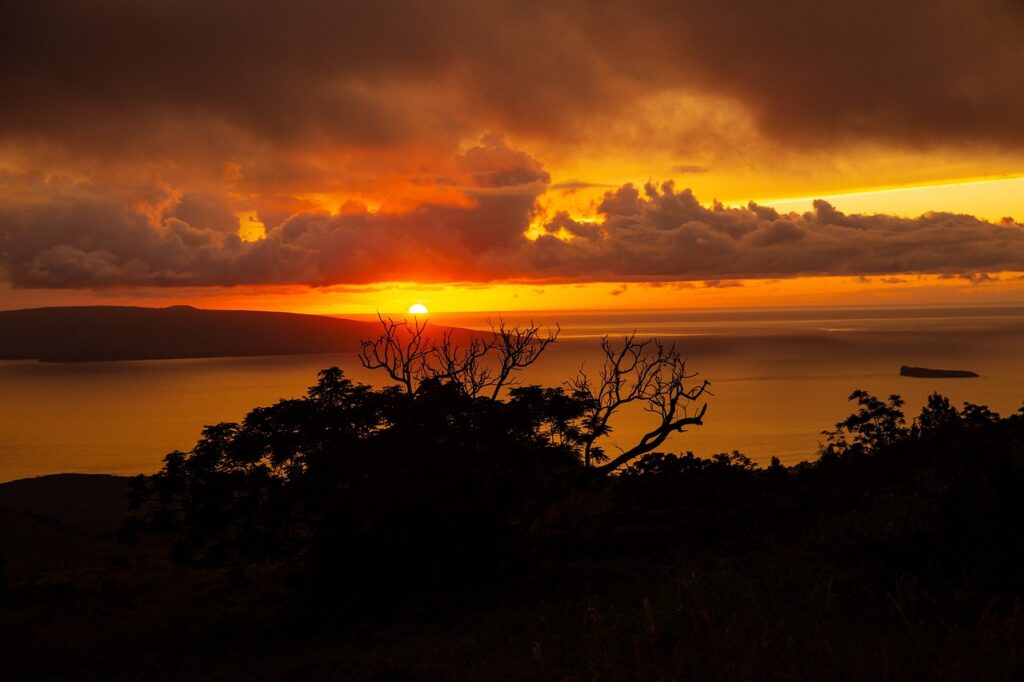Ukraine has faced extreme damage as a result of the war, but, much like Japan did after the second world war, they have an opportunity to build back better than before. Unlike Japan, which had to use more traditional technologies that were available at the time, Ukraine can access the power of supercomputers, the metaverse, and AI to create a far more efficient hardscape, but being one of the first to do this would be extremely risky.
After the fire on Maui, Maui will need to rebuild, but the task is less extensive than in Ukraine. Plus, Hawaii is a part of the U.S. which leads with technology so it’s close to experts that better understand the details of the effort.
This makes Hawaii a potentially excellent showcase of how to apply technology to create a productive, safe, and more resilient community against climate change and hostile forces.
Let’s explore how Hawaii’s recovery could set the stage for rebuilding Ukraine.
EPCOT
When Walt Disney created the initial concept for EPCOT (Experimental Prototype City of Tomorrow) he started with a clean slate and created a conceptual model of what a city could look like (this 1961 film starts with a review of the parks but then focuses on the city of tomorrow). While the city itself was never built, the concept still has value and showcases what you can do when given a clean slate.
While the Ukraine rebuild will be many times the cost of the Maui rebuild, the initial concepts and technologies used could be very similar and, as Disney imagined for EPCOT, using today’s technology to build a future Ukraine that’s more like Finland, where vehicles gave way to bike riding and where government works for all of the people to create a better and more resilient country.
The Maui template
Using Finland as an example would work for Maui as well because Hawaii tends to focus aggressively on sustainability to preserve its islands’ natural beauty. I expect post-war Ukraine will be similar given that wars tend to drive people together and often can result in a far more cooperative and collaborative population.
Since the Island is primarily a tourist rather than a manufacturing revenue-sourced population center, why wouldn’t they rethink transportation there much like Ukraine might want to do given the massive damage to its infrastructure? And given that the fire was likely caused by the local energy company and Ukraine is struggling with its nuclear power plants, new ways to both generate and deliver electricity and other utilities to homes and businesses would be a priority for both areas. But being far smaller, Maui could more rapidly implement a rebuild and become a great showcase of what is possible.
Technologies
A few technologies come to mind that could massively improve both Ukraine and Maui, like 3D-printed houses and buildings. Currently, China has become the leader in 3D printed houses, but there are several companies also spun up in the U.S. and Europe. 3D printing allows buildings to be created that are more resilient to natural disasters (and ordinance) than traditional structures and they go up in a fraction of the time for a fraction of the money of legacy building techniques. Making both Maui and Ukraine livable again very quickly is a priority in order to get citizens back into homes and back to work and out of refugee camps.
Hyperloop or other fast transport technologies like Maglev could do wonders for transportation. For Maui, it could be yet another thing people go to the island to see and it could provide a transportation showcase much like the Maglev train in Singapore has become a showcase for China (I once spent an entire afternoon riding the Singapore Maglev train up and back to the airport, and it was a blast). But this also makes the location a place of technical competence that would work well for Ukraine as it rebuilds its economy and become yet another cultural draw for Hawaii.
Another major trend we are anticipating is microgrids, which are the distribution of energy generation so that the result is more robust and problems regarding power generation and delivery in both locations don’t recur. For instance, in the Hawaii fires, it is believed that the energy supplier may have started the fire.
Drones for delivery, safety, and observation would also be useful for both locations. Ukraine has been building drones of late and some are aquatic. These Aquatic drones could be used by Maui to help lifeguards identify and help rescue swimmers more safely, better monitor the Hawaiian reefs, and deliver goods across islands (larger ones of course) and to boats and ships anchored offshore or in harbors. At scale, aquatic drones could also be used to deliver goods from the mainland, reducing costs for Hawaiians and suggesting some unique synergy between the regions.
As for AI and simulation, one of the tools we have now is the Metaverse. NVIDIA’s Omniverse could use AI to turn that model into a living simulation. Traffic patterns, escape corridors and infrastructure can be laid out long before the first foundation is set. This allows both Ukraine and Maui to work through the rebuild options virtually first, thus potentially saving billions in the rebuild and creating a more automated result (maybe designed for autonomous electric cars) that could be a showcase for the world.
Wrapping up
Both Ukraine and Maui will need to rebuild, but Ukraine can’t really make much progress until the war is over, making Hawaii an ideal location to test and refine the use of many cutting-edge tools that could turn both regions into technology showcases that could better survive the next catastrophe and then provide their experience and capabilities to other countries and states that also will eventually need to modernize.
Both regions have and are undergoing dire events, but they can use this opportunity to rebuild better than they are and to use metaverse, advanced transportation, energy generation, and energy transport technologies to become both showcases for the future and centers of competence for the related technologies, resulting in better living conditions and better revenue opportunities. We have the technology. Why not use it to begin to build a better world?



